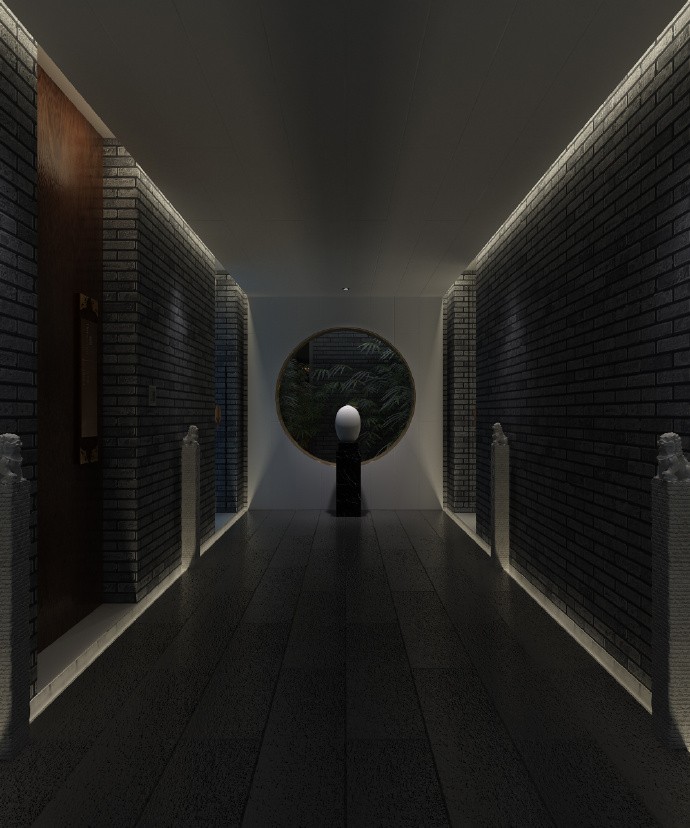House in the Hills Architectare
2013-12-02 01:00
© Leonardo Finotti
莱昂纳多·芬诺蒂


架构师提供的文本描述。尽管该建筑物的面积相当大,但其形状是由该地段入口处的可建区域的小三角形确定的,这是由于强制执行共管公寓和地方立法造成的。整个建筑区域都嵌在这个三角形中,但甲板除外,它是按允许设计为可渗透建筑的。这些限制迫使房子非常暴露在街道上,这被认为是一个设计建议。
Text description provided by the architects. Despite being in a proportionately large lot, the building has its shape defined by the small triangle of its buildable area on the entrance of the lot, resulting from enforcement of the condominium and local legislation. The whole building area is embedded in this triangle, with the exception of the deck, which was designed as permeable construction, as allowed. Those restrictions forced the house to be very exposed to the street and that was taken as a design proposition.
© Leonardo Finotti
莱昂纳多·芬诺蒂


通往街道的门面设计是为了给人一种印象,即除了图书馆和一楼的一些小开口外,所有门面都是封闭的。这个立面的图形纹理代表了建筑与土地的结合。从土壤中,出现了一个明确的形态,具有有机结构,由聚集在该地区的岩石构成。在这个强大的基础上,另一卷是轻松解决的。
The façade towards the street was designed to give the impression that it is all closed, with exception of the library and some small openings on the first floor. The graphic texture of this façade represents the integration of the architecture with the land. From the soil, a well-defined form arises, with organic texture, made with rocks gathered in the place. On this strong base, another volume is lightly settled.
© Leonardo Finotti
莱昂纳多·芬诺蒂


这卷书包含了房间,并通过他们的大滑动板铝与街道互动。这种非常合理的结构被图书馆的书架打断了,书架被杂乱无章的木柴作图所占据。
This volume contains the rooms and interacts with the street by means of theirs big sliding panels made of aluminum. This very rational texture is interrupted by the library bookshelf, which is dominated by the disordered timber wood graphism working as a moucharebiya.
© Leonardo Finotti
莱昂纳多·芬诺蒂


朝向土地内部的立面是由滑动的玻璃板组成的,冬天的下午,阳光直射,使房子变暖。加强内部与外部自然的整合。这些玻璃板在白天提供必要的光线输入。
The façade towards the inside of the land is made of sliding glass panels, receiving direct sun during the winter afternoon, warming the house for the night. and increasing the integration between the interior and the nature outside. Those glass panels provide the necessary input of light during the day.
© Leonardo Finotti
莱昂纳多·芬诺蒂


为了增加室内的阳光,在楼梯上方设计了一个天窗。在夜间,照明设计受益于材料的纹理,以保持温暖的气氛。整个一楼的设计,以确保充分相互作用的不同用途和空间的房子。因此,滑动玻璃板可以完全开放;将起居室变成阳台,甲板成为内部空间的延伸,取消游泳池与厨房外部之间的障碍。
To increase the interior sun light, a skylight above the stairs was designed. At night, the lighting design benefits from the material´s textures to preserve the warm atmosphere. The entire 1st floor is designed to ensure full interaction among the different uses and spaces of the house. For this, the sliding glass panels can be completely open; transforming the living room into a veranda and the deck becomes an extension of the internal space, annulling the barriers between the swimming pool and outside kitchen.
© Leonardo Finotti
莱昂纳多·芬诺蒂


二楼更私密,所有卧室都转向图书馆所在的阁楼,从那里你可以看到第一层,而不会太暴露。
The 2nd floor is more private and all the bedrooms turn to the mezzanine where the library is, from which you can see the first floor without being too exposed.
Planta - 1º Pavimento
Planta-1 Pavimento








































Architects Architectare
Location Itaipava, Brazil
Category Houses
Project Architects Flavia Quintanilha e Rodrigo Fernandes
Area 704.0 m2
Photographs Leonardo Finotti
























